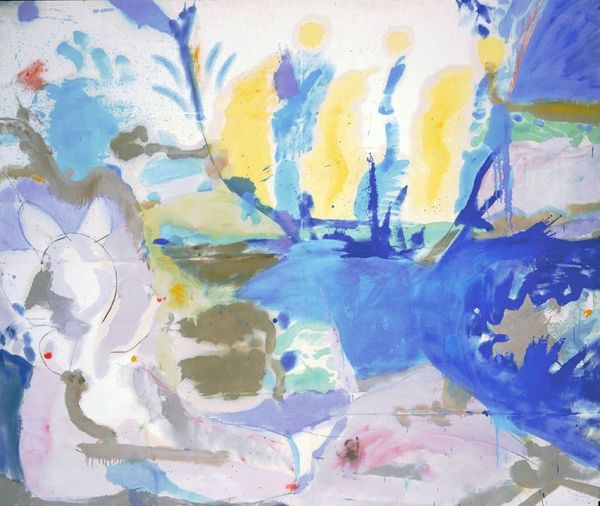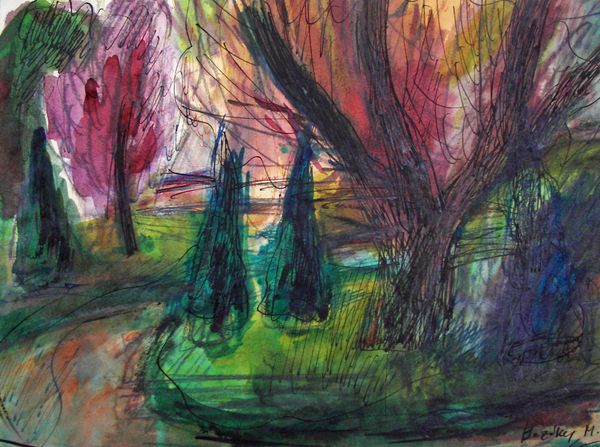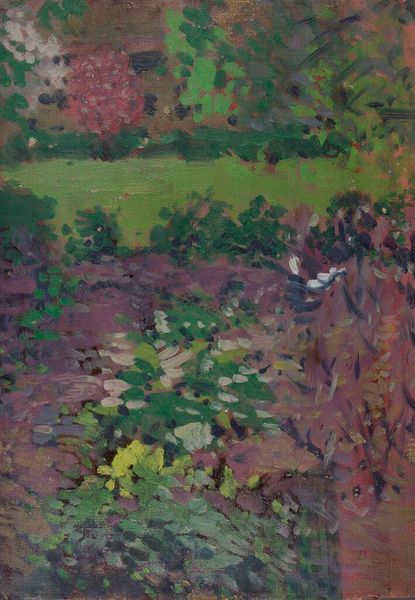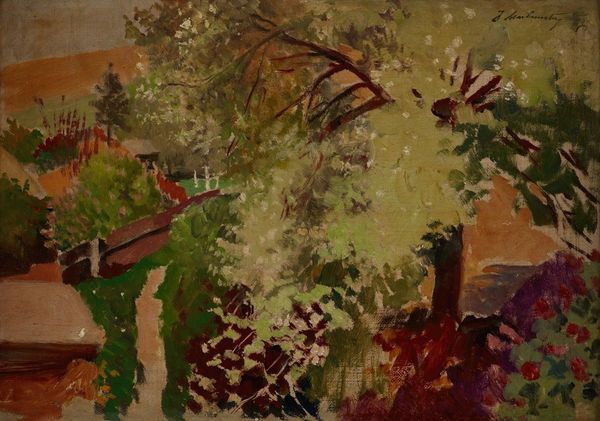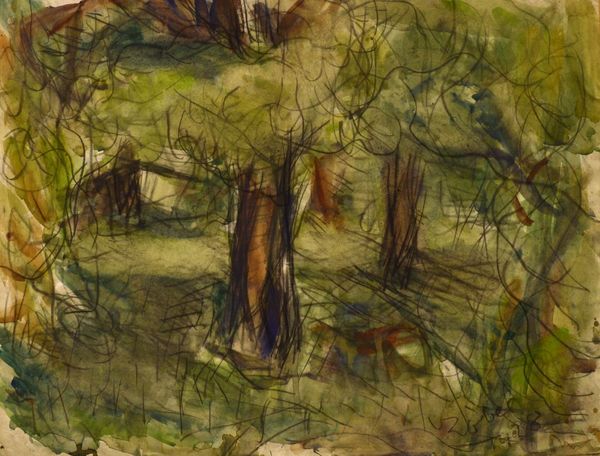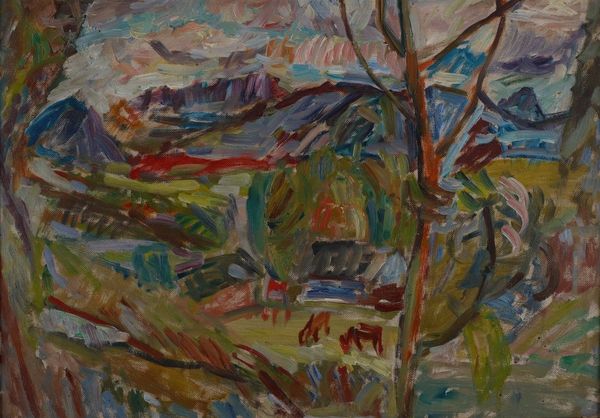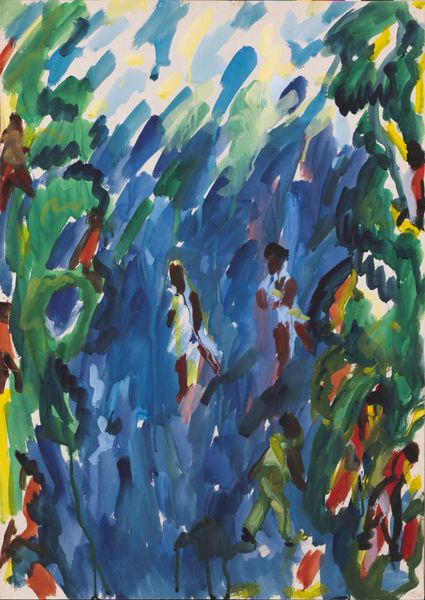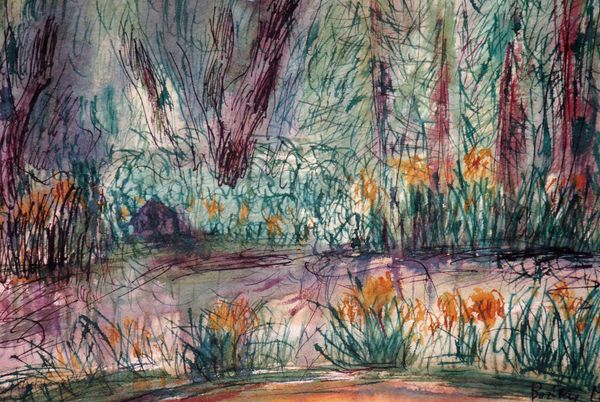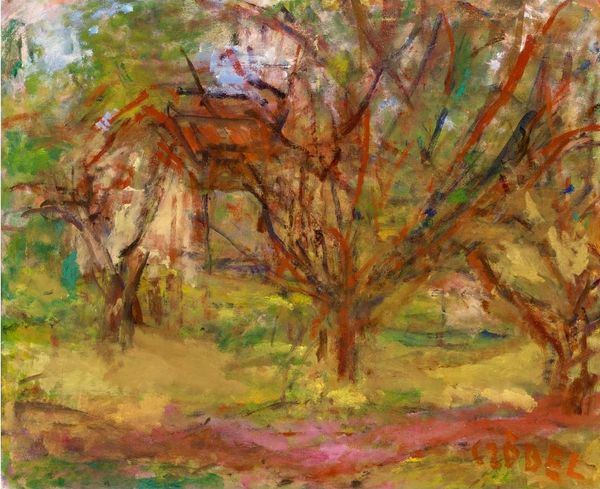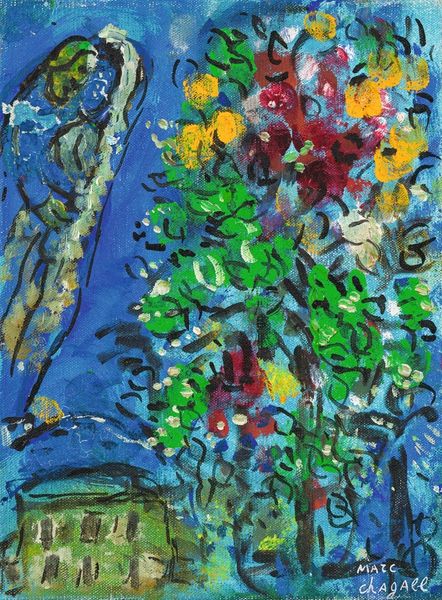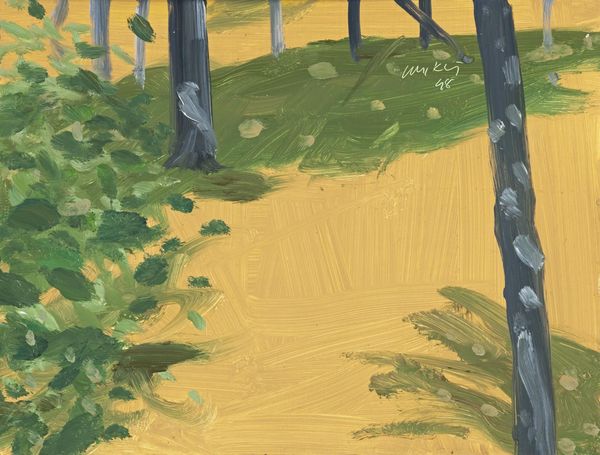
painting, oil-paint, impasto
#
fauvism
#
fauvism
#
painting
#
oil-paint
#
landscape
#
impressionist landscape
#
impasto
Copyright: Public Domain: Artvee
Curator: This is Tadeusz Makowski’s “Sun over a Garden,” painted in 1908. Editor: My initial feeling is one of warmth, oddly enough, given the limited palette. There’s an almost childlike simplicity in the depiction, but with an assured hand. Curator: Makowski employs thick impasto here, a tactile quality to the oil paint, almost as if the garden itself is being sculpted onto the canvas. The vigorous brushwork emphasizes the materiality, drawing attention to the act of painting itself. Editor: The structure seems straightforward – a strong horizontal grounding, anchoring the chaotic foliage. That wild, bright yellow sun pulls the eye upward. The arbitrary, expressive use of color is reminiscent of Fauvist principles; note the patches of pure hues divorced from naturalistic representation. Curator: Indeed, one could situate it within that moment. Makowski was certainly engaging with contemporary trends, with how artists like Matisse were depicting similar scenes. But think, too, about the economic conditions. Pigments at the time… what kind of paint were more accessible? Editor: Perhaps he chose colors that allowed him the freedom of spontaneous expression while maintaining tonal cohesion. Semiotically, we can analyze how the sun serves as a focal point—almost a godlike presence dominating the earthly garden. Curator: Or, practically, did he choose colors because they lasted longer when painting en plein air, a trend for landscape painters, or because they were more easily and cheaply available for purchase? Also, let’s consider the garden itself. Gardens have historically signified not just beauty, but labor. Editor: An interesting point, however I feel you are missing a key part of the puzzle. It strikes me that Makowski seems to suggest nature unfiltered, almost violently pure, as though the conventional expectations are shed in favor of raw visual sensation. I get lost in the materiality of the painting itself. Curator: True, however let’s not lose sight of that historical context. That sensation emerges, is made possible by, that moment, that time period. By industrial production, the economy. Editor: A vital and nuanced perspective! I now notice that his style appears almost as a raw sketch with vivid sensations through color. It presents something truly authentic. Curator: Absolutely, considering his techniques with materials and social context shows an insightful glimpse into the artist's style and intentions.
Comments
No comments
Be the first to comment and join the conversation on the ultimate creative platform.

